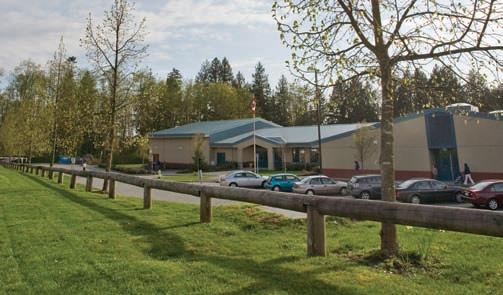SPOA_Spr_2010:SPOA_Template.qxd
5/5/2010
5:07 PM
Page 30
Natural gas as a transportation fuel BY JEFF CAMPBELL
There is a new interest in natural gas as a transportation fuel in North America, driven by maturing technology for natural gas vehicles (NGV) and a significant increase in natural gas reserves, which drives lower fuel costs. Earlier interest in NGVs was focused on converting gasoline engines to run on natural gas. Today, new heavy-duty natural gas engine technology has been integrated as a factory option in vehicles for a range of applications, including school buses, transit buses, refuse trucks, vocational and urban truck/tractor pick-up and delivery applications. Natural gas is a clean fuel that offers lower emissions and economic benefits to fleets. While fleets are often motivated by air quality concerns to switch to natural gas, natural gas in transportation also contributes to energy security and can reduce fleet operating costs. NGVs around the world have also had an impressive record of safe operation. North American natural gas reserves have increased significantly. This increase has been driven by the development of new horizontal drilling and extraction technologies that opened access to shale gas reserves throughout North America, includ-
30
Ops Talk • Spring 2010
ing world-class resource plays like the Montney Formation and the Horn River Shale Formation in British Columbia. The increase in supply, coupled with a focus on energy efficiency, resulted in low commodity prices. In March of 2010, natural gas was $4.30 MBTUs, which is equivalent to $25.80 per barrel, versus $82.90 per barrel for crude oil. This price gap is expected to continue, resulting in significant savings at the pump for natural gas customers. Natural gas is also the lowest carbon fossil fuel. NGV adoption supports British Columbia’s goals with respect to greenhouse gas (GHG) reductions. Reductions of 20 to 30 per cent in GHG emissions are attainable with the use of natural gas, as compared to diesel-fuelled vehicles. Natural gas can be used as a vehicle fuel in either compressed (CNG) or liquid (LNG) form. The Cummins Westport ISL G introduced in 2007 is capable of operating on both fuels, and was the first heavy-duty engine to be certified to the strict 2010 North American emission standards. With up to 320 horsepower and 1,000 foot-pounds of torque, the ISL G offers diesellike performance with ultra-low emissions. This engine technology is available in factory-built natural gas vehicles from: • refuse trucks: Mack, Peterbilt, AutoCar, Crane Carrier and American LaFrance • transit buses: Daimler (Orion), New Flyer and North American Bus Industries • trucks: Freightliner, Kenworth and Peterbilt


















